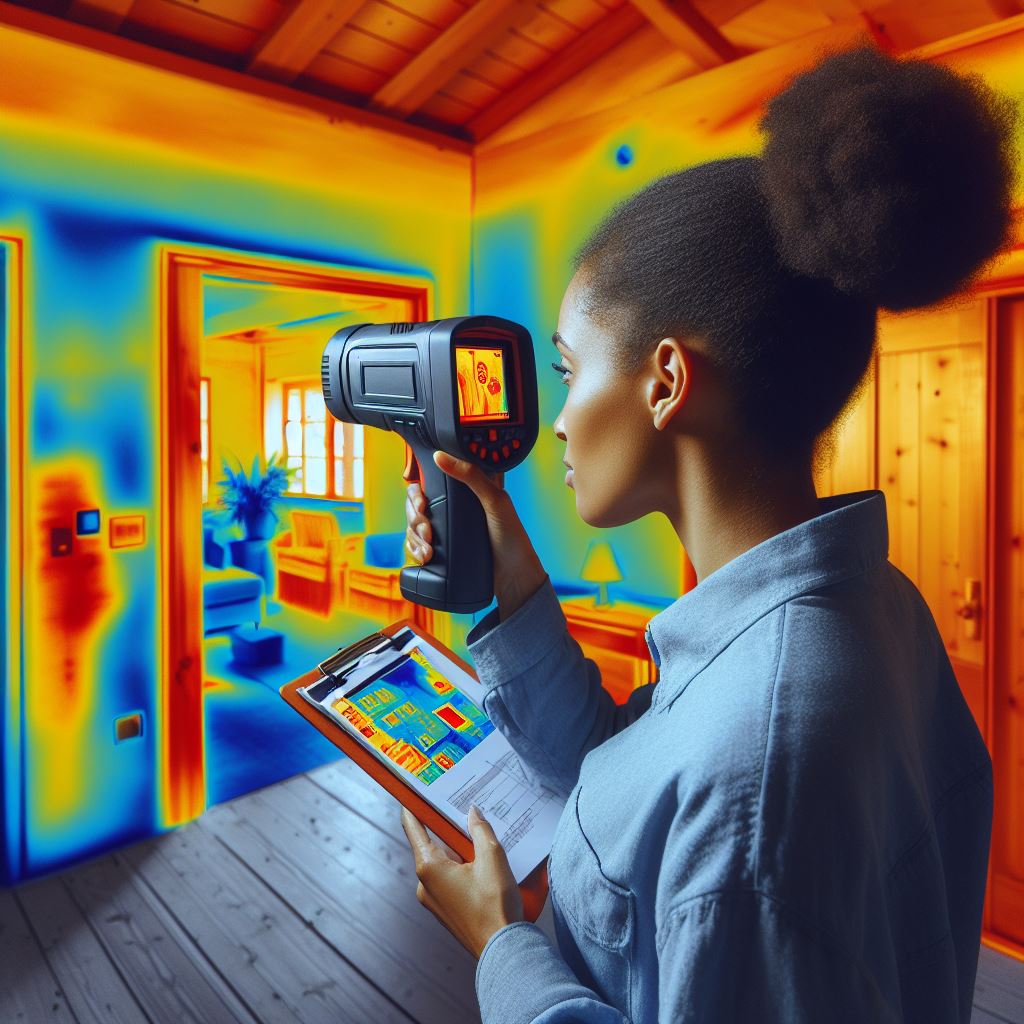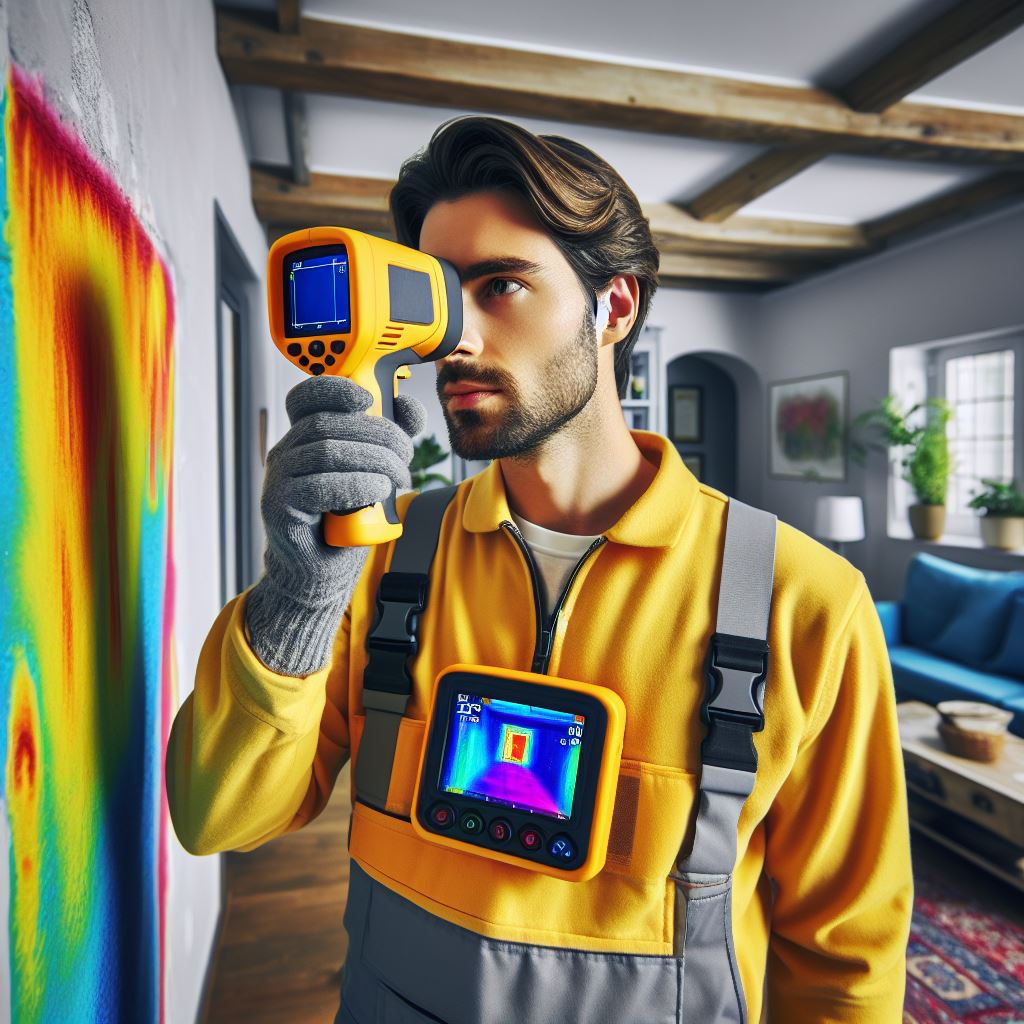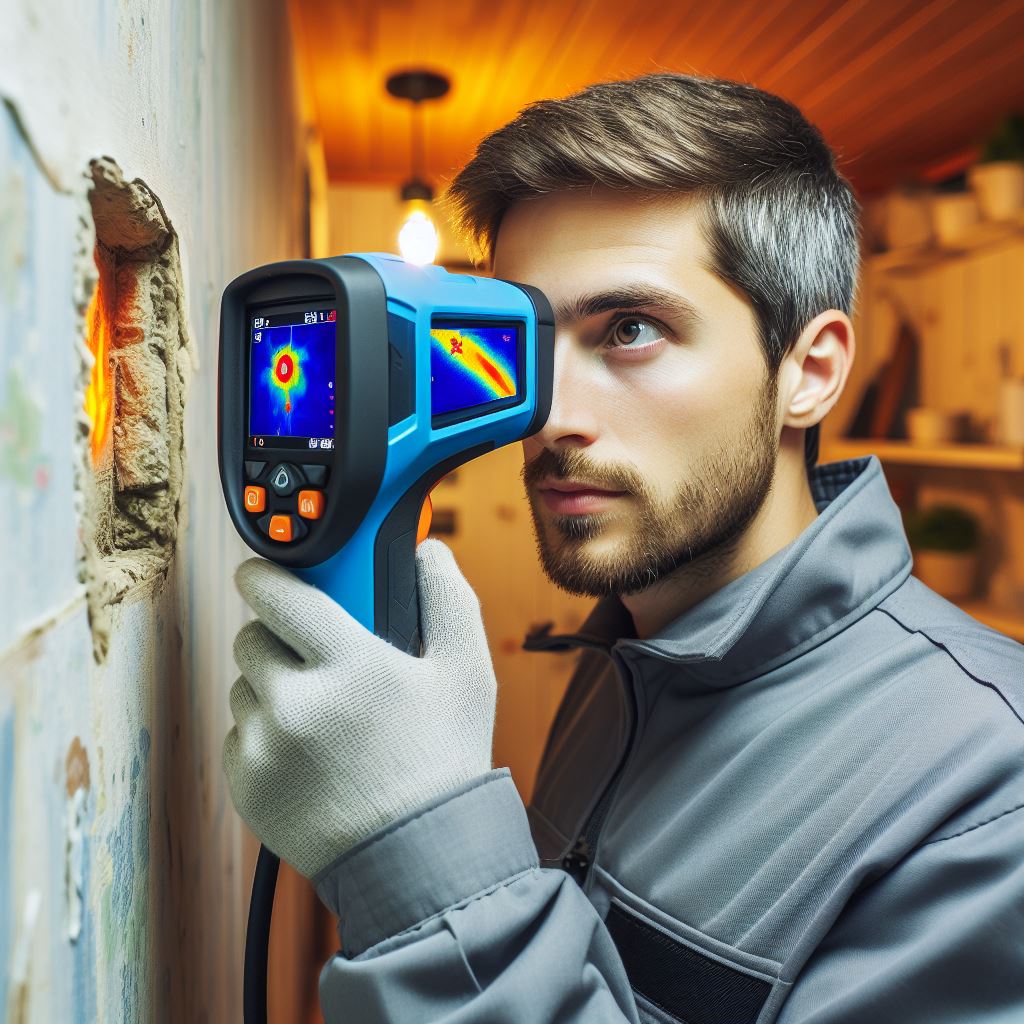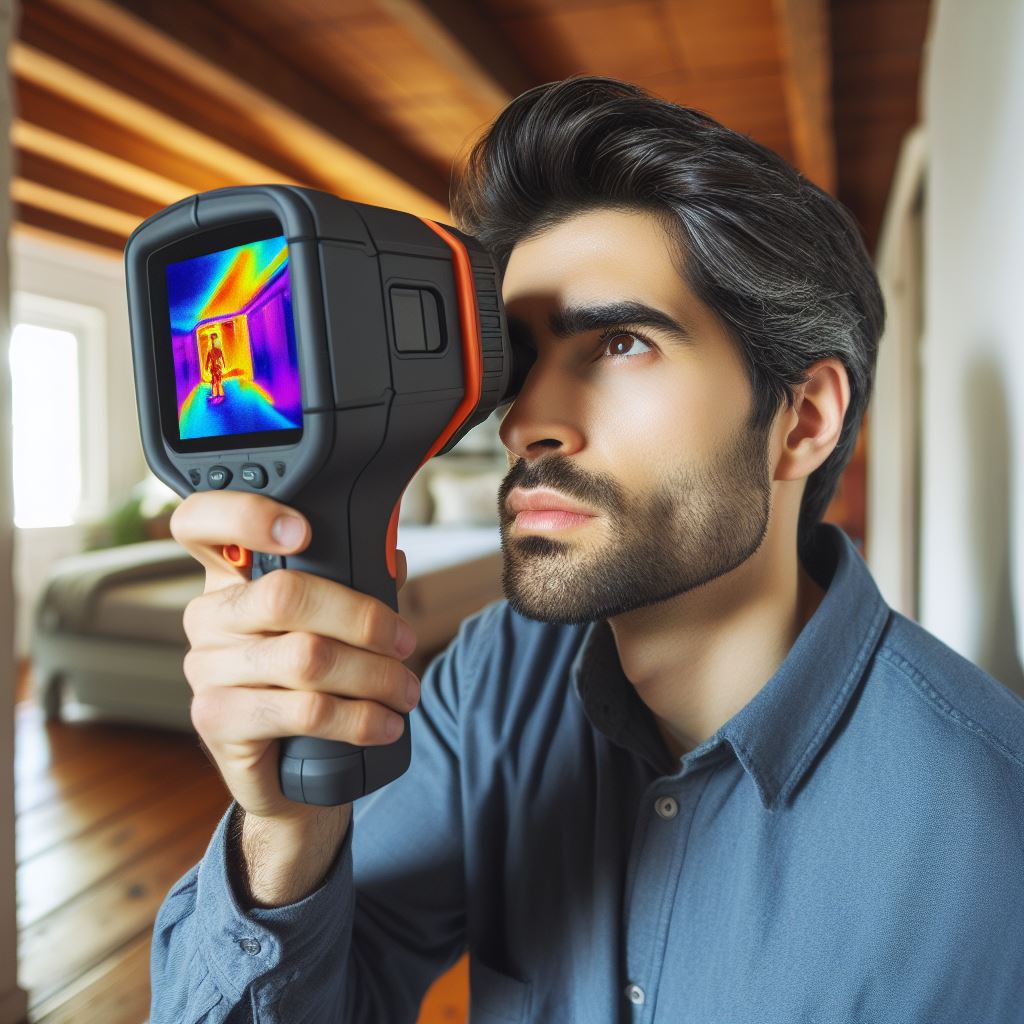The Advantages of Thermal Imaging in the Inspection Industry
Thermal imaging has revolutionized the inspection industry, offering a range of advantages that were previously unimaginable. This technology utilizes infrared radiation to create images that capture the heat signatures of objects and surfaces. By detecting variations in temperature, thermal imaging allows inspectors to identify potential issues that may not be visible to the naked eye. In this article, we will explore the numerous advantages of thermal imaging in the inspection industry.

One of the primary advantages of thermal imaging is its ability to detect hidden problems. Traditional inspection methods often rely on visual inspection alone, which can be limited in its effectiveness. However, thermal imaging can reveal hidden issues such as water leaks, electrical faults, and insulation problems. By identifying these problems early on, inspectors can prevent further damage and potentially save their clients significant amounts of money.
Furthermore, thermal imaging is a non-destructive testing method, meaning that it does not require physical contact with the object or surface being inspected. This is particularly advantageous in industries such as construction and manufacturing, where damaging or dismantling structures for inspection can be time-consuming and costly. With thermal imaging, inspectors can quickly and efficiently assess the condition of a structure without causing any damage.
Another advantage of thermal imaging is its ability to provide real-time results. Unlike other inspection methods that may require samples to be sent to a laboratory for analysis, thermal imaging provides instant feedback. Inspectors can view the thermal images on-site and make immediate decisions based on the information gathered. This not only saves time but also allows for prompt action to be taken if any issues are detected.
In addition to its real-time capabilities, thermal imaging also offers a high level of accuracy. The technology is capable of detecting even the smallest temperature variations, making it highly sensitive to potential problems. This level of accuracy ensures that inspectors can identify issues with precision, reducing the risk of false positives or negatives. By providing accurate results, thermal imaging instills confidence in both inspectors and their clients.
Furthermore, thermal imaging is a versatile tool that can be used in a wide range of industries. From building inspections to electrical inspections, thermal imaging can be applied to various sectors. This versatility makes it a valuable asset for inspectors who work across different industries, as they can rely on thermal imaging to provide consistent and reliable results.
Lastly, thermal imaging is a cost-effective solution for inspections. While the initial investment in thermal imaging equipment may be higher compared to traditional inspection tools, the long-term benefits outweigh the costs. By detecting issues early on, thermal imaging can prevent costly repairs and replacements down the line. Additionally, the efficiency and accuracy of thermal imaging reduce the need for repeat inspections, saving both time and money.
In conclusion, thermal imaging has transformed the inspection industry by offering numerous advantages. From detecting hidden problems to providing real-time results, thermal imaging has proven to be a valuable tool for inspectors. Its accuracy, versatility, and cost-effectiveness make it an essential asset in various industries. As technology continues to advance, it is likely that thermal imaging will become even more prevalent in the inspection industry, further enhancing its benefits and capabilities.
How Thermal Imaging Enhances Efficiency in Inspections
Thermal imaging has revolutionized the inspection industry by providing a non-invasive and efficient method for detecting and diagnosing problems. This technology uses infrared radiation to create images that reveal temperature variations in objects and surfaces. By capturing these temperature differences, thermal imaging allows inspectors to identify hidden issues that may not be visible to the naked eye. This article will explore how thermal imaging enhances efficiency in inspections and the various applications of this technology.

One of the key advantages of thermal imaging is its ability to detect problems without the need for physical contact. Traditional inspection methods often require inspectors to physically access the area being inspected, which can be time-consuming and may cause damage to the object or surface. Thermal imaging eliminates the need for physical contact, allowing inspectors to assess the condition of an object or surface from a safe distance. This not only saves time but also reduces the risk of accidents or further damage.
Furthermore, thermal imaging enables inspectors to identify problems that are not visible to the naked eye. For example, in electrical inspections, thermal imaging can detect overheating components, loose connections, or faulty wiring. These issues may not be apparent during a visual inspection but can lead to serious safety hazards if left undetected. By using thermal imaging, inspectors can quickly identify these hidden problems and take appropriate actions to prevent potential accidents or failures.
In building inspections, thermal imaging is also highly beneficial. It can identify areas of heat loss or air leakage, which can lead to energy inefficiency and increased utility bills. By pinpointing these areas, inspectors can recommend insulation improvements or sealing measures to enhance energy efficiency. Additionally, thermal imaging can detect moisture intrusion, which can lead to mold growth and structural damage. By identifying these issues early on, inspectors can prevent costly repairs and ensure the safety and comfort of building occupants.
Thermal imaging is not limited to electrical and building inspections. It has found applications in various industries, including mechanical, automotive, and aerospace. In mechanical inspections, thermal imaging can identify overheating bearings, misaligned components, or lubrication issues. This allows maintenance teams to schedule repairs or replacements before a breakdown occurs, minimizing downtime and costly repairs. In the automotive industry, thermal imaging can detect engine or exhaust system problems, enabling mechanics to diagnose and fix issues efficiently. In aerospace, thermal imaging is used to inspect aircraft components for defects or damage, ensuring the safety and reliability of the aircraft.
The efficiency of thermal imaging in inspections is further enhanced by the advancements in technology. Modern thermal imaging cameras are compact, portable, and user-friendly, allowing inspectors to easily navigate and capture images in various environments. These cameras also offer high-resolution images and advanced features, such as temperature measurement and image analysis software, which facilitate accurate and detailed inspections. Additionally, the integration of thermal imaging with other technologies, such as drones or robots, enables inspections in hard-to-reach or hazardous areas, further improving efficiency and safety.
In conclusion, thermal imaging has significantly enhanced efficiency in the inspection industry. Its non-invasive nature, ability to detect hidden problems, and wide range of applications make it an invaluable tool for inspectors. By utilizing thermal imaging, inspectors can save time, prevent accidents, and identify issues that may otherwise go unnoticed. As technology continues to advance, thermal imaging will undoubtedly play an even more significant role in inspections, ensuring the safety, efficiency, and reliability of various industries.
The Future of Inspection Industry with Thermal Imaging Technology
In recent years, the inspection industry has undergone a significant transformation with the introduction of thermal imaging technology. This innovative technology has revolutionized the way inspections are conducted, providing inspectors with a powerful tool to detect and identify potential issues that may not be visible to the naked eye. With its ability to capture and analyze thermal patterns, thermal imaging has become an indispensable asset in various sectors, including building inspections, electrical inspections, and mechanical inspections.

One of the key advantages of thermal imaging technology is its non-destructive nature. Unlike traditional inspection methods that often require invasive procedures, thermal imaging allows inspectors to assess the condition of a structure or system without causing any damage. By simply capturing thermal images, inspectors can identify anomalies and potential problems, such as leaks, electrical faults, or insulation deficiencies, without the need for physical intervention. This not only saves time and resources but also minimizes disruption to the inspected object or area.
Furthermore, thermal imaging technology enables inspectors to detect hidden issues that may not be visible to the naked eye. For example, in building inspections, thermal imaging can reveal moisture intrusion, which can lead to mold growth and structural damage. By identifying these issues early on, preventive measures can be taken to mitigate further damage and ensure the safety and longevity of the structure. Similarly, in electrical inspections, thermal imaging can detect overheating components, loose connections, or faulty wiring, which can help prevent electrical fires or equipment failures. By identifying these potential hazards, necessary repairs or replacements can be made, reducing the risk of accidents or downtime.
Another significant advantage of thermal imaging technology is its ability to provide quantitative data. Unlike visual inspections that rely on subjective interpretations, thermal imaging generates objective and measurable results. By analyzing the temperature variations captured in thermal images, inspectors can quantify the severity of an issue and prioritize necessary actions. This data-driven approach enhances the accuracy and reliability of inspections, allowing for more informed decision-making and resource allocation.
Moreover, thermal imaging technology has greatly improved the efficiency and speed of inspections. With the ability to capture and analyze thermal images in real-time, inspectors can quickly identify and address potential issues. This not only saves time but also enables proactive maintenance and reduces the likelihood of costly repairs or replacements. Additionally, thermal imaging can be used for remote inspections, eliminating the need for physical presence in hazardous or hard-to-reach areas. This not only enhances safety but also expands the scope of inspections, making it possible to assess areas that were previously inaccessible.
In conclusion, thermal imaging technology has revolutionized the inspection industry, offering numerous advantages over traditional inspection methods. Its non-destructive nature, ability to detect hidden issues, provision of quantitative data, and improved efficiency have transformed the way inspections are conducted. As this technology continues to evolve and become more accessible, it is expected to further enhance the accuracy, speed, and effectiveness of inspections across various sectors. With its potential to prevent accidents, reduce downtime, and optimize resource allocation, thermal imaging is undoubtedly the future of the inspection industry.
